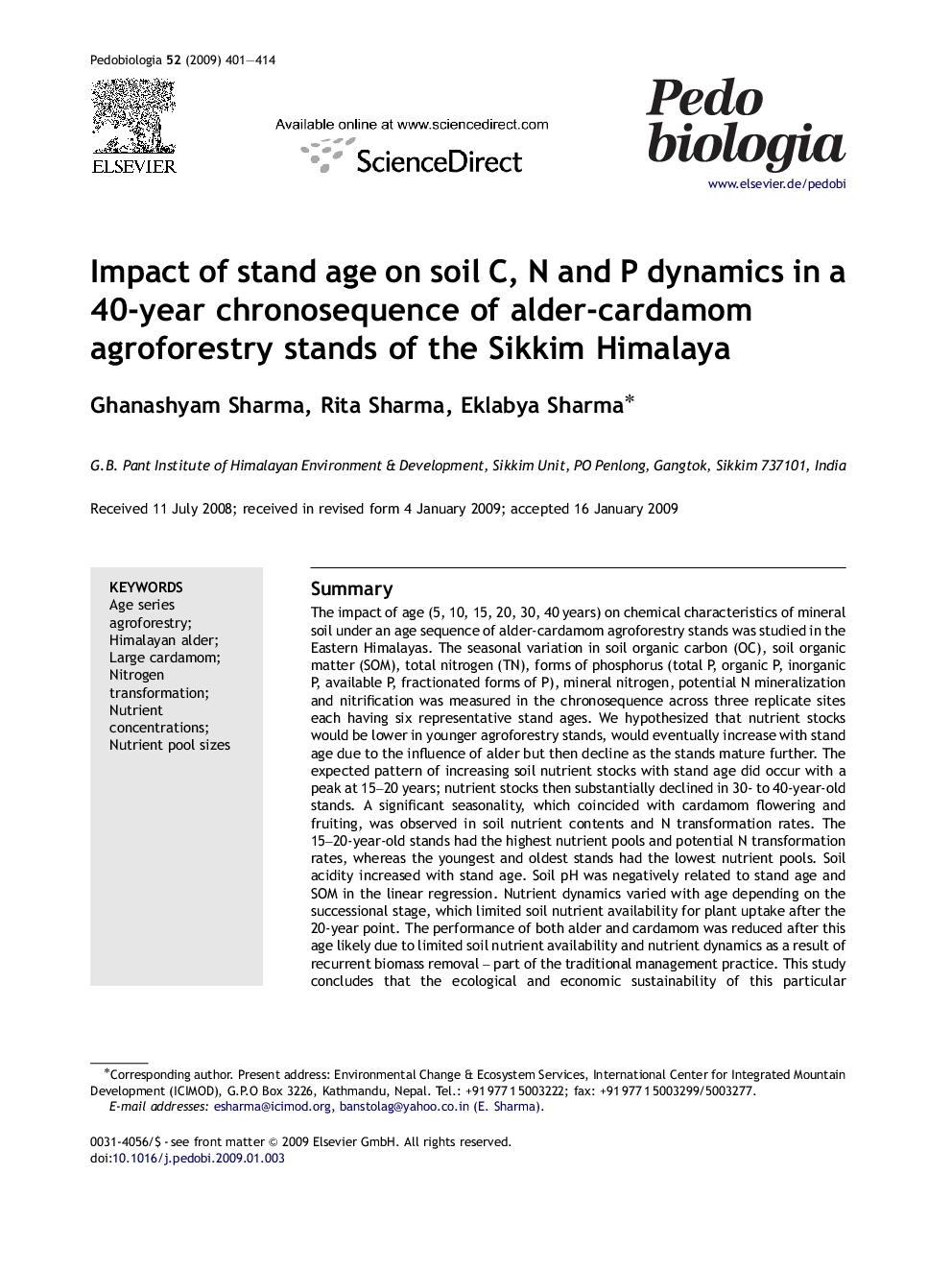| کد مقاله | کد نشریه | سال انتشار | مقاله انگلیسی | نسخه تمام متن |
|---|---|---|---|---|
| 2061525 | 1076497 | 2009 | 14 صفحه PDF | دانلود رایگان |

SummaryThe impact of age (5, 10, 15, 20, 30, 40 years) on chemical characteristics of mineral soil under an age sequence of alder-cardamom agroforestry stands was studied in the Eastern Himalayas. The seasonal variation in soil organic carbon (OC), soil organic matter (SOM), total nitrogen (TN), forms of phosphorus (total P, organic P, inorganic P, available P, fractionated forms of P), mineral nitrogen, potential N mineralization and nitrification was measured in the chronosequence across three replicate sites each having six representative stand ages. We hypothesized that nutrient stocks would be lower in younger agroforestry stands, would eventually increase with stand age due to the influence of alder but then decline as the stands mature further. The expected pattern of increasing soil nutrient stocks with stand age did occur with a peak at 15–20 years; nutrient stocks then substantially declined in 30- to 40-year-old stands. A significant seasonality, which coincided with cardamom flowering and fruiting, was observed in soil nutrient contents and N transformation rates. The 15–20-year-old stands had the highest nutrient pools and potential N transformation rates, whereas the youngest and oldest stands had the lowest nutrient pools. Soil acidity increased with stand age. Soil pH was negatively related to stand age and SOM in the linear regression. Nutrient dynamics varied with age depending on the successional stage, which limited soil nutrient availability for plant uptake after the 20-year point. The performance of both alder and cardamom was reduced after this age likely due to limited soil nutrient availability and nutrient dynamics as a result of recurrent biomass removal – part of the traditional management practice. This study concludes that the ecological and economic sustainability of this particular agroforestry system is possible by adopting a 20-year re-plantation cycle for alder and cardamom, and a phase-wise agroforestry rotation.
Journal: Pedobiologia - Volume 52, Issue 6, 25 September 2009, Pages 401–414